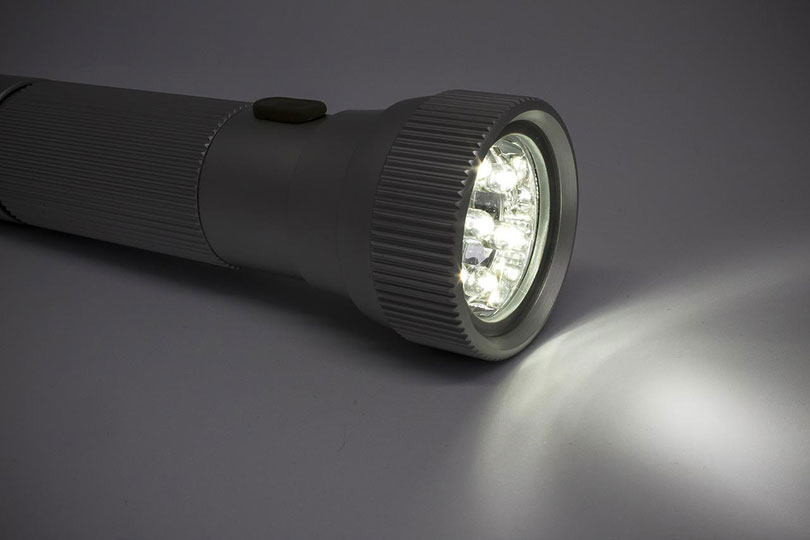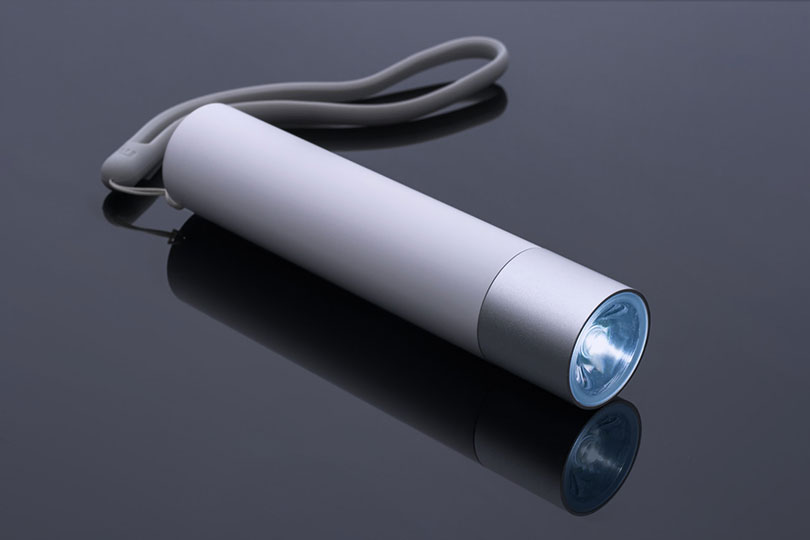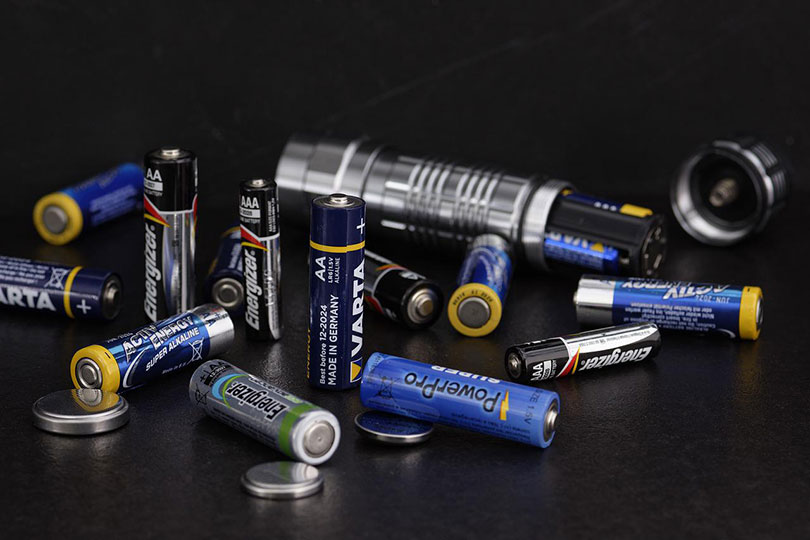Can You Take a Flashlight on a Plane? Does It Depend on Type?
Last Updated on

TSA regulations1 allow you to take a flashlight on a plane, both in your carry-on bags or your checked bags. That being said, the flashlight should not be over 7 inches in length if you want to pack it in your carry-on, and there are some rules concerning battery type.
For a comprehensive look at how you can bring a flashlight with you on a plane, keep reading.

Flashlights Allowed on Planes by Luggage Type
Certain devices are only allowed to be brought on a plane if they are stored in your checked luggage. Other devices are allowed to be stored in your carry-on luggage or your checked luggage.
What about flashlights? Flashlights are allowed to be brought and stored in both luggage types, but there are different rules concerning the two.

Carry-On
Flashlights 7 inches or shorter are allowed to be stored in your carry-on bags. The reason for this is that a flashlight is considered a tool. TSA makes clear that all tools need not extend 7 inches whenever they are measured from end to end when completely assembled.
So, you can bring flashlights in your carry-on luggage, but make sure that the flashlight is shorter than 7 inches, or else it will not be allowed in your carry-on luggage.
Checked
Practically all flashlights are allowed in your checked luggage. The 7-inch rule does not apply to checked luggage, only carry-on luggage. You may need to take the batteries out of the flashlight if you intend to store it in your checked luggage, though.

Flashlights Allowed on Planes by Battery Type
As mentioned above, how you handle your flashlight when stored in checked luggage often is determined by the battery type. Non-removable and removable batteries should be handled differently. Here’s a look at what to do with your flashlight if you check your luggage based on battery type.

Non-Removable Batteries
Flashlights with non-removable batteries are allowed in both checked and carry-on luggage. You don’t need to do anything special concerning the battery or flashlight.
Removable Batteries
Removable batteries are a little bit different. Remove the batteries and place them in your carry-on bag. Place the flashlight itself either in the carry-on or checked luggage, depending on size.
However, lithium-ion batteries that are between 101 and 160 watt-hours need prior approval from your airline to be carried in your carry-on bag. Anything under 100 watt-hours does not require prior authorization.
Extra Batteries
If you intend to pack extra batteries, store them in your carry-on bag. The rules concerning battery wattage are the same for your extra batteries as the removable batteries.
What About Tactical Flashlights?
Tactical flashlights are a little bit different than other flashlights because some TSA officers view tactical flashlights as weapon-capable. As a result, some tactical flashlights make it through the checkpoint, whereas others do not.
The reason for this is that TSA allows the TSA officers to decide if an object is allowed through the checkpoint. In other words, it is ultimately up to the TSA officer you encounter to determine if your tactical flashlight is allowed.
So that your flashlight is not confiscated, we recommend storing it in your checked luggage to begin with. That way, you don’t run into any potential issues at the checkpoint.

Worried? Call Your Airline
If you are worried about your flashlight following TSA regulations, the best thing you can do is call your airline. Your airline will know the TSA regulations and help you to determine if your flashlight is allowed. So, don’t hesitate to call your airline if you have any hesitancies or questions.

Final Thoughts
Generally speaking, flashlights are allowed to be taken on a plane, but different factors will impact whether you should store them in your carry-on luggage or your checked luggage.
As a rule of thumb, flashlights under 7 inches in length and removable batteries should all be stored in your carry-on luggage. Larger flashlights and tactical flashlights should always be stored in your checked luggage instead.
If you have any other questions or hesitations about how to bring your flashlight safely on a plane, don’t hesitate to contact your airline or TSA. Both will be able to help you to determine the best course of action for bringing your flashlight on the plane.
Featured Image Credit: stux, Pixabay
About the Author Robert Sparks
Robert’s obsession with all things optical started early in life, when his optician father would bring home prototypes for Robert to play with. Nowadays, Robert is dedicated to helping others find the right optics for their needs. His hobbies include astronomy, astrophysics, and model building. Originally from Newark, NJ, he resides in Santa Fe, New Mexico, where the nighttime skies are filled with glittering stars.
Related Articles:
Can You Use Binoculars to Look At Stars? How to Choose the Right Pair
How to Clean a Refractor Telescope: Step-by-Step Guide
How to Clean a Telescope Eyepiece: Step-by-Step Guide
How to Clean a Rifle Scope: 8 Expert Tips
Monocular vs Telescope: Differences Explained (With Pictures)
What Is a Monocular Used For? 8 Common Functions
How to Clean a Telescope Mirror: 8 Expert Tips
Brightfield vs Phase Contrast Microscopy: The Differences Explained
